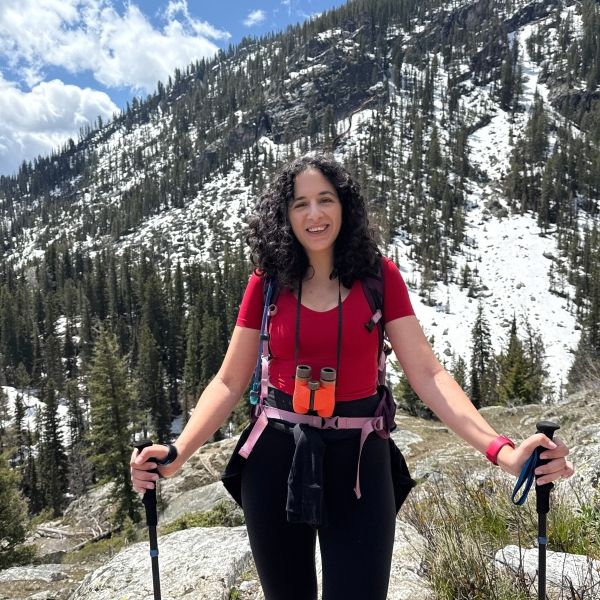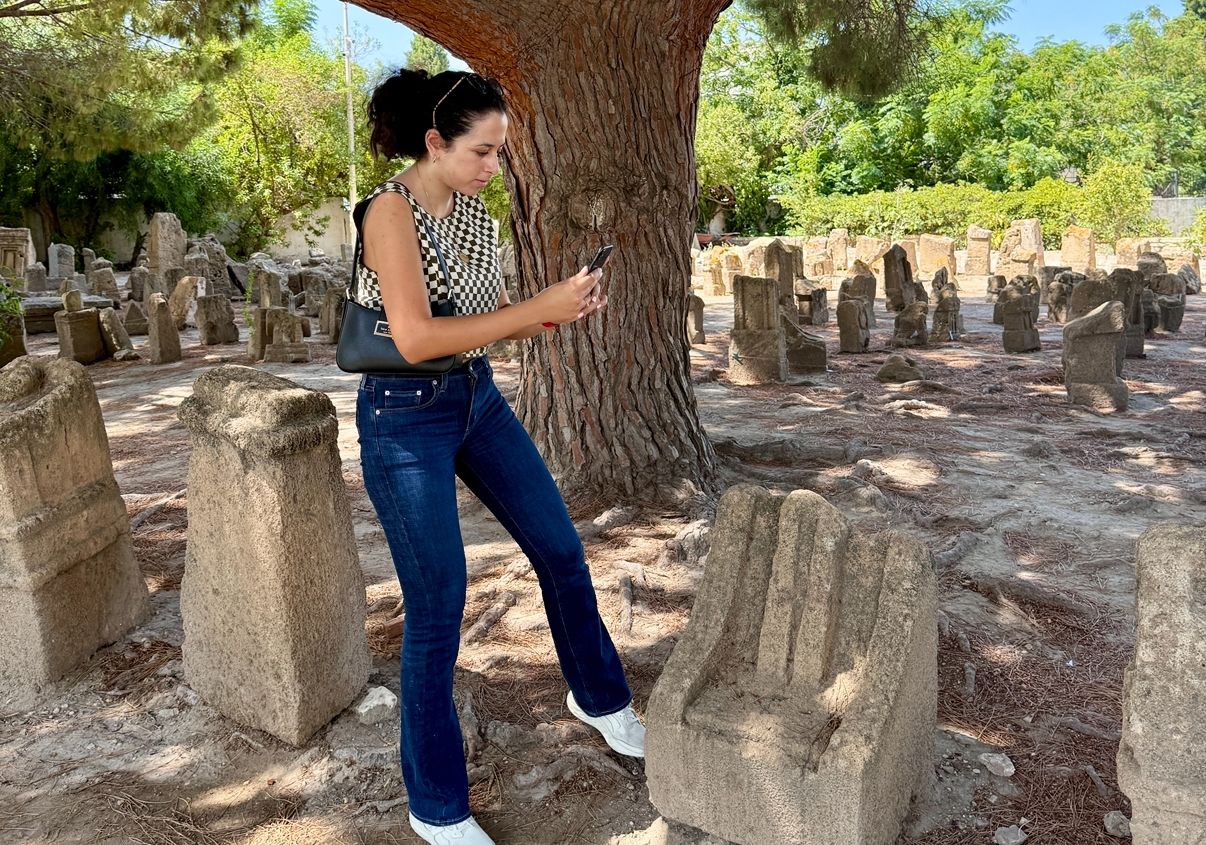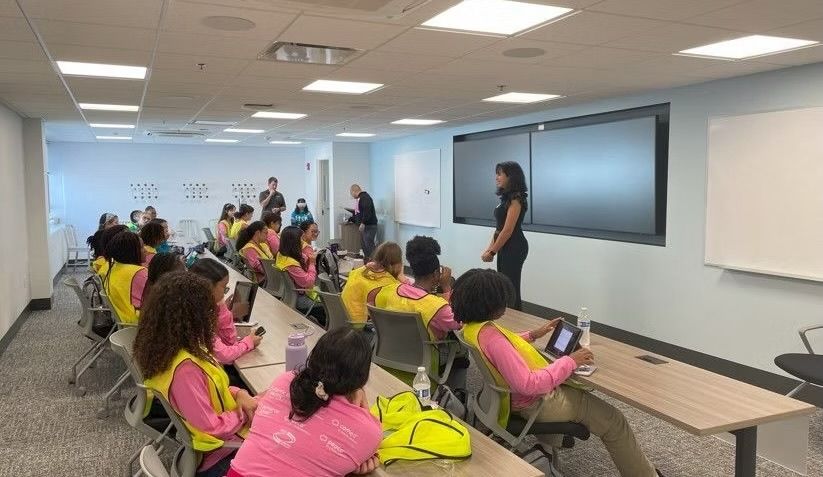Image

-
Ines Said (she/her)
Founder at Tanit XR, Lead XR Developer at Froliq
- 30 Under 30
- 2025
Ines uses immersive technology to make environmental and cultural education engaging, preserving heritage and inspiring climate awareness through interactive XR storytelling.
Tunisia & United States, Age 29
How are you using education to build more sustainable and equitable communities? Tell us about your EE work and impact.
I believe education should make people feel connected to the planet, not just informed about it. My work uses immersive technology to turn environmental learning into an experience—something learners can see, touch, and emotionally engage with.
Through my projects, I transform climate data and cultural narratives into interactive environments that invite people to reflect on their relationship with nature. Installations like Shadows of Tomorrow use body tracking and augmented reality to visualize the effects of climate change within human silhouettes, creating a sense of shared responsibility that transcends borders.
My initiative, Tanit XR, extends this mission by preserving Tunisia’s archaeological heritage in 3D, linking environmental change with cultural preservation. At Froliq, I apply similar principles to XR projects that teach sustainability, energy efficiency, and emotional awareness in accessible, inclusive ways.
Across all my work, I aim to make education immersive, emotional, and empowering—because meaningful change begins when people see themselves as part of the environment they’re trying to protect.
Tell us about your journey to where you are today. What inspired you? What has your path been like?
I grew up in Tunisia surrounded by ruins, mosaics, and traces of ancient civilizations. Back then, I didn’t realize how fragile they were. It wasn’t until I moved abroad that I started to see the world differently. One afternoon on a beach in Florida, I noticed the sand glittering under the sun. When I got closer, I realized it wasn’t shells—it was styrofoam, millions of tiny fragments scattered across a state park. I was shocked. That moment stayed with me. It made me understand that when people see something for themselves, it changes them. You can’t unsee it. You want to do something about it.
That realization became the foundation of my work. I began using technology—first photogrammetry, then virtual and augmented reality—to show people what is happening to our environment and culture in ways that facts alone can’t.
Today, through projects with Tanit XR and Froliq, I create immersive experiences that help people witness both the damage and the possibility of change. My goal is to make people not just learn about the world’s problems but see them clearly enough to feel responsible for solving them.
How can people learn more about or support your work?
People can learn more about my work through my website, where I share updates on my immersive projects, and through my nonprofit initiative Tanit XR. Tanit XR is dedicated to digitally preserving Tunisia’s cultural heritage in 3D and connecting it to environmental education. Our growing online archive helps people explore archaeological sites virtually and understand why protecting them matters.
There are many ways to support this mission. The easiest way is by helping us share our work and raise awareness so more people can access Tunisia’s cultural and environmental stories. People can also volunteer with Tanit XR from anywhere in the world—whether by helping with 3D scanning and modeling, storytelling and research, education outreach, or social media and communications. We also welcome collaborations with educators, institutions, and cultural organizations interested in integrating immersive heritage materials into learning programs.
Finally, people can donate through our website to help us continue scanning sites across Tunisia and keep the archive open to the public.
To connect, visit the websites above or follow me on LinkedIn, where I share ongoing projects and opportunities to get involved.
A Little More About Me
What advice would you give to the next generation of leaders?
Never be afraid to send that email or apply to an opportunity that feels out of reach. You never know what will surprise you or how far one message can take you.Who (or what) keeps you hopeful for the future?
Young people who care deeply about the planet give me hope. Every time a student or volunteer joins Tanit XR to preserve something that isn’t theirs personally, I’m reminded that empathy still drives the world forward.What are you happiest doing?
Hiking in the mountains or deep in Florida swamps, surrounded by wildlife such as alligators, bears, moose, and bison, and trying to spot them quietly in their world.What is one thing about you that might surprise others?
I'm a certified scuba diver.

Ines Said, founder of Tanit XR, scanning ancient Punic stelae at the Tophet of Salammbô in Carthage using mobile photogrammetry. Photo credit: Fatma Slama

Ines Said using Shadows of Tomorrow, an interactive installation where participants see their silhouette filled with a burning forest, symbolizing humanity’s role in climate change. Photo credit: Brianne Lehan

Ines Said speaking at an energy sustainability event with Froliq, encouraging students to explore how technology and creativity can shape a greener future. Photo credit: Froliq Team